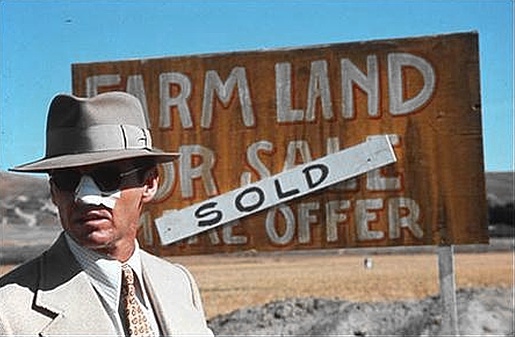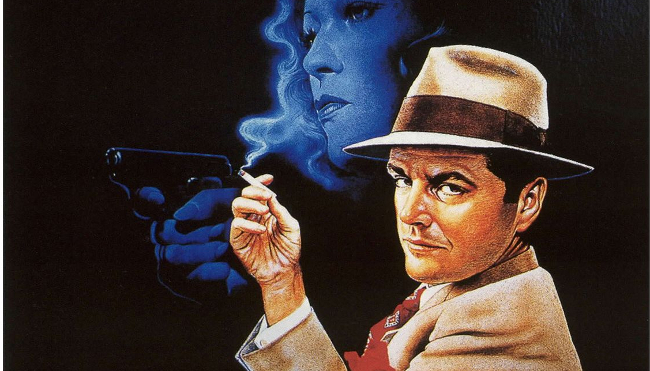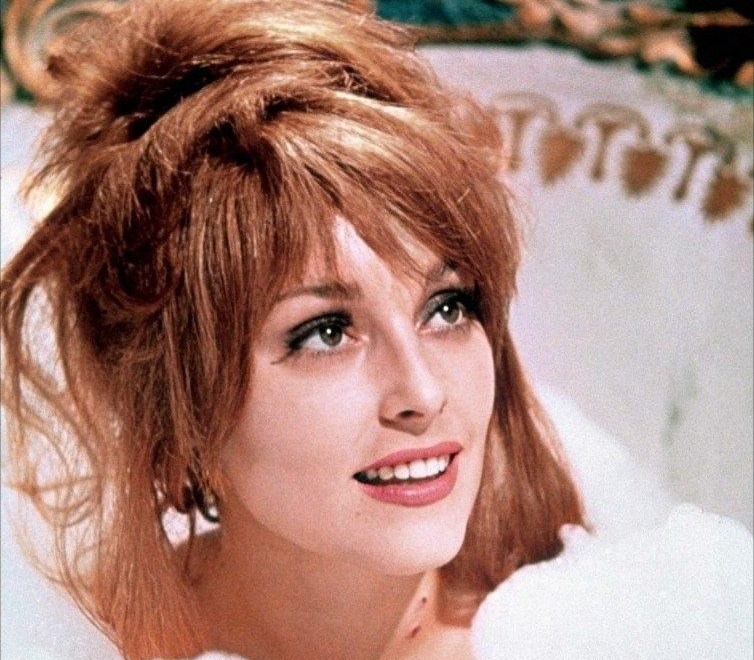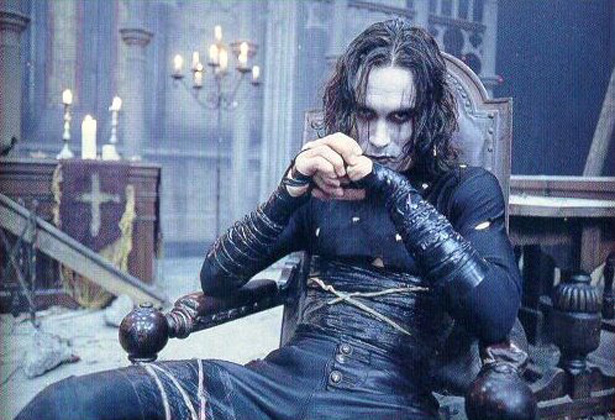Every musician on Earth knows it – being eviscerated is the best song-writing fuel there is. Nothing makes you pour your heart into art like having it ripped out of your body and pureed. Fortunately for all of us not on the receiving end of said pain, we get to enjoy the badass art that’s birthed by human agony. There’s a catharsis factor to creating art . The world weary artist gets to scream into the void all their fears and frustrations.
The following is from Part 2 of this article. To read Part 1, point your clicking device right about here. It details the tragedies behind “Interview with the Vampire” and “Raging Bull.”
Chinatown
The flick is considered the template for neo-noir. It takes a familiar story – Private Investigator deals with saucy dames, the corrupt upper-class, and the seedy criminal underbelly of the city – and breaks all of the illusions over its knee. I’d toss out a “spoiler warning,” but the movie’s been out for forty years. Jake is clever, but he’s just a man. He gets the hell beat out of him, barely makes it through the mystery, and ultimately loses to the much more powerful corrupt forces that run the city. You never do learn what Jake’s oft-referenced mysterious past is. The love interest dies, the crimes get swept under the rug, the bad guy wins. Roll credits.
Though the movie is wonderful, and I highly recommend watching it (if you haven’t), easily the most memorable thing about the movie is the ending. It swings a heavy fist into your gut, kicks you over, and walks off whistling with your wallet. It’s basically a proto “Game of Thrones” episode.
However, that wasn’t the original ending. In the screnplay, Jake wins, gets the girl, the bad guys get exposed. While there’s no question “Chinatown” would still be a good movie with that ending, it wouldn’t even be close to being considered the classic it is now. So what happened?
The Tragedy
Four years before director Roman Polanski stepped behind the camera to direct “Chinatown,” his pregnant wife Sharon Tate was murdered by the Manson Family.
Sharon Tate was an actress, model, magazine cover girl, and general sixties sex symbol. Her most famous roll was in “The Valley of the Dolls,” but her filmography and celebrity at the time was nothing to scoff at. She was also famously outspoken about sex – she considered the censorship of sex to be ridiculous. Hell, she was even the inspiration for “Malibu Barbie,” if the stories are to be believed.
Sharon Tate met Roman Polanski on the set of “Fearless Vampire Killers,” which is a title I can no longer use for my autobiography. Dammit. The two had a passionate, happy, if tempestuous marriage – Polanski’s infidelity was well documented, and even Tate was quoted as saying “We have an arragement – Roman lies to me, and I pretend to believe it.” Still, rumors were they had an “open marriage,” rumors Tate did nothing to squash. It was the sixties, man. No judgement.
In 1969, while Polanski was working in London, Sharon Tate (two weeks away from her due date), and four others were stabbed to death by Charles Manson’s band of psychotic assholes in their California home. Victims included friend-of-the-family and Hollywood hair stylist Jay Sebring, childhood friend Wojciech Frykowski and his girlfriend Abigail Folger, along with Steven Parent, an unlucky bastard who happened to be selling a radio to the groundskeeper that night. The groundskeeper made it out alive, through the power of “hiding and doing nothing,” if (admittedly conflicting) reports are to be believed. The “Badass Motherfucker” award goes to hair stylist Jay Sebring, who actually went down trying to protect Tate and her baby from the killers.
Roman Polanski was (naturally) devastated, and allowed journalists to take pictures of him in the still bloody home in an attempt to shock the public into coming forward with any information. Eventually the Manson family were all arrested and convicted – all of the killers but one are still alive, rotting in jail. The only one who isn’t alive died in prison, and that’s fine.
Fast-forward four years, and Roman Polanski decides that “Chinatown’s” screenplay only had one problem – that damn happy ending. So they changed it to the crapsack ending we remember today, the one where the girl dies, the bad guys get away, and the protagonist is left alone and disillusioned in a fucked-up world.

The Crow
“The Crow” is a 1994 film based on a comic written by James O’Barr. The movie is often called a “cult classic,” which is a little misleading because “The Crow” was a complete financial success, and opened top of the box office.
The flick stars Brandon Lee, Bruce Lee’s son, as an avenging revenant. Eric Draven (Lee) is a rock guitarist who is planning to marry his fiancee, Shelly, on Halloween. The night before Halloween, Detroit hosts what is called “Devil’s Night,” a real-life phenomenon (at the time) where criminals and teenagers go batshit crazy and burn derelict buildings down, steal shit, assault people, etc. On Devil’s Night, in the movie, Eric and Shelly are murdered by dickheads, who are never arrested. Jump ahead exactly one year, and a mystical crow shows up and brings Eric back to life as a supernatural stalker committed to slaughtering the thugs responsible for his tragedy.
It’s difficult to separate the actual film from the tragedy surrounding it – this entry on the list is unique for not only being inspired by a tragedy, but for causing one. Star Brandon Lee was accidentally killed on set by a Rube Goldberg-like string of minor mistakes that would be right at home in a Final Destination movie. Lee even died in the same scene where his character would have died, by exactly the same method – a gunshot wound in the chest.
A fake bullet had been lodged in the barrel of the gun, an incompetent prop guy didn’t check the gun before the scene, the producers had sent the firearm expert home early, and a blank round was fired at Lee’s chest. The powder explosion turned the fake bullet caught in the barrel into a very real bullet, and Lee was killed.
There’s tragedy on both ends of “The Crow.” Let’s talk about the beginning.
The Tragedy
James O’Barr, the original “Crow” comic’s creator, was 18 years old and engaged to be married to the love of his life. Soon after, his fiancee Bethany was killed by a drunk driver.
Right after Bethany’s death, James O’Barr joined the Marines. While stationed in Berlin in 1981, James entered what he called a “spiral of self-destruction,” drinking heavily and living life like the expiration date was coming up. It wasn’t until O’Barr picked up a newspaper that he decided to put his pain on paper. The story that finally forced him to pick up the pencil was about a young couple in Detroit, who were murdered by muggers over a $20 dollar engagement ring.

That’s three tragedies involved in making “The Crow,” if you’re keeping score at home. Here’s the story, from the man himself:
“I was really hurt, frustrated, and angry. I thought that by putting some of this anger and hate down on paper that I could purge it from my system. But, in fact, all I was doing was intensifying it–I was focusing on all this negativity. As I worked on it, things just got worse and worse, darker and darker. So, it really didn’t have the desired effect–I was probably more fucked up afterwards than before I started.”
It took seven years for the comic to finally get published. The release of the film, and Brandon Lee’s tragic death, put things into perspective for O’Barr.
“It was only after becoming friends with Brandon, experiencing his death, and seeing the film–perhaps 17 times now–that I finally reached what is currently called “closure” while visiting his grave in Seattle.”
In Closing
Pain sucks – but if it’s ever your turn on the Wheel O’ Agony, just remember that there’s always a way to squeeze the poison out. There’s always a path forward, even if it’s choked with frustration and sorrow. Pick up that art machete and hack the fuck out of those vines until you see daylight.
I promise next week’s article will be about, like, baby polar bears and Jolly Ranchers or something.




